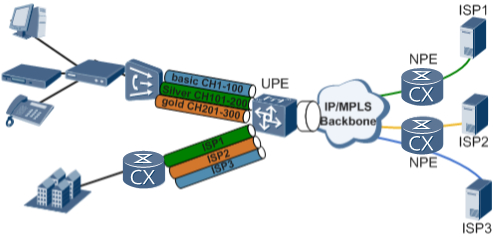Layer 2 Multicast Entry Limit
Principles
With the growing popularity of IPTV applications, multicast services are more widely deployed than ever. When multicast services are deployed on a Layer 2 network, a number of problems may arise:
- If users join a large number of multicast groups, sparsely distributed multicast groups will increase performance pressure on network devices.
- If network bandwidth is insufficient, the demand for bandwidth resources will exceed the total network bandwidth, overloading aggregation layer devices and degrading user experience.
- If multicast packets are used to attack a network, network devices become busy processing attack packets and cannot respond to normal network requests.
Related Concepts
Entry limit: provides rules to limit the number of multicast groups, implementing control over multicast entry learning. Layer 2 multicast entry limit is a function of limiting entries of multicast services on a Layer 2 network.
Implementation
If IGMP snooping is enabled, Layer 2 multicast entry limit can be used to control multicast services. Multicast entry limit constrains the generation of multicast forwarding entries. When a specified threshold is reached, no more forwarding entries will be generated. This conserves the processing capacity of devices and controls link bandwidth.
Layer 2 multicast entry limit can be classified by usage scenario as follows:
- VLAN scenario:
- Layer 2 multicast entry limit in a VLAN
- Layer 2 multicast entry limit on an interface
- Layer 2 multicast entry limit in a VLAN on a specified interface
- VPLS scenario:
- Layer 2 multicast entry limit in a VSI
- Layer 2 multicast entry limit on a sub-interface
- Layer 2 multicast entry limit on a PW
Layer 2 multicast entry limit can restrict the following items:
Number of multicast groups
The number of multicast groups allowed can be limited when a device creates Layer 2 multicast forwarding entries. This protects device and network performance by limiting the number of groups available for users to join. After IGMP Report messages are received from downstream user hosts, the device checks entry limit statistics to determine whether the threshold for the number of multicast groups has been reached. If the threshold has not been reached, a forwarding entry is generated and entry limit statistics are updated to show the increase in groups. If the threshold has been reached, no entry is generated. When IGMP Leave messages are received or entries age, the entries are deleted and entry limit statistics are updated.
Deployment Scenarios
Layer 2 multicast entry limit can be used on VLANs and VPLS networks.
Benefits
Layer 2 multicast entry limit offers the following benefits:
- Prevents required bandwidth resources from exceeding the total bandwidth of the aggregation network and improves service quality for users.
- Improves multicast service security.
